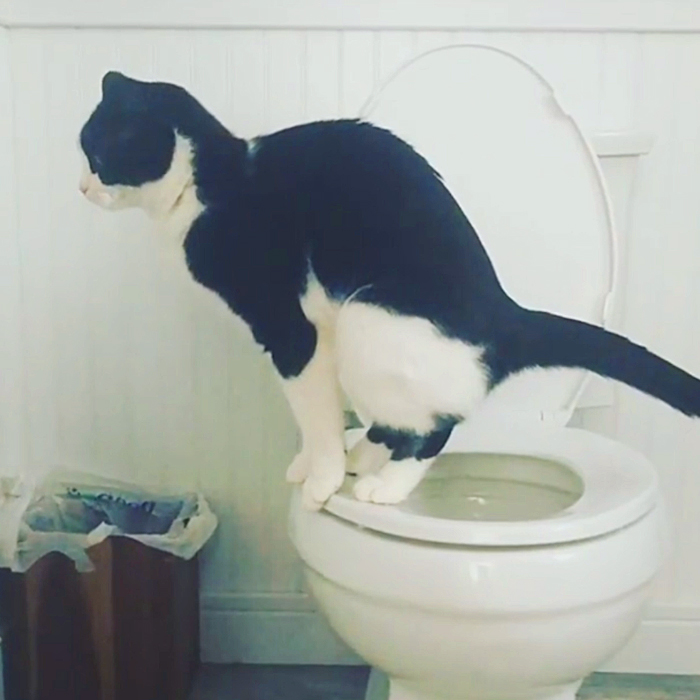Prevent Plumbing Problems: Don't Flush Cat Poop Down Your Toilet - Expert Guidance
Prevent Plumbing Problems: Don't Flush Cat Poop Down Your Toilet - Expert Guidance
Blog Article
We've come across this great article relating to Don’t flush cat feces down the toilet directly below on the web and accepted it made good sense to talk about it with you over here.

Introduction
As pet cat owners, it's essential to be mindful of how we take care of our feline close friends' waste. While it might appear practical to flush cat poop down the toilet, this method can have harmful effects for both the atmosphere and human health.
Alternatives to Flushing
Thankfully, there are much safer and extra accountable means to deal with pet cat poop. Think about the adhering to options:
1. Scoop and Dispose in Trash
The most common approach of getting rid of feline poop is to scoop it into a naturally degradable bag and throw it in the trash. Be sure to make use of a dedicated litter scoop and deal with the waste without delay.
2. Use Biodegradable Litter
Select biodegradable pet cat trash made from products such as corn or wheat. These litters are eco-friendly and can be securely disposed of in the trash.
3. Bury in the Yard
If you have a backyard, think about hiding feline waste in a designated location away from vegetable gardens and water sources. Be sure to dig deep enough to prevent contamination of groundwater.
4. Set Up a Pet Waste Disposal System
Purchase a pet dog waste disposal system especially created for feline waste. These systems make use of enzymes to break down the waste, lowering odor and environmental influence.
Health Risks
In addition to ecological problems, flushing cat waste can also position health and wellness threats to humans. Feline feces might contain Toxoplasma gondii, a parasite that can cause toxoplasmosis-- a possibly severe ailment, particularly for expectant women and individuals with weakened immune systems.
Ecological Impact
Flushing pet cat poop introduces harmful virus and bloodsuckers right into the water, posing a significant risk to marine ecological communities. These contaminants can adversely influence aquatic life and compromise water quality.
Verdict
Responsible pet ownership expands past providing food and sanctuary-- it likewise involves proper waste management. By avoiding purging pet cat poop down the toilet and opting for different disposal techniques, we can minimize our ecological impact and secure human health.
Why Can’t I Flush Cat Poop?
It Spreads a Parasite
Cats are frequently infected with a parasite called toxoplasma gondii. The parasite causes an infection called toxoplasmosis. It is usually harmless to cats. The parasite only uses cat poop as a host for its eggs. Otherwise, the cat’s immune system usually keeps the infection at low enough levels to maintain its own health. But it does not stop the develop of eggs. These eggs are tiny and surprisingly tough. They may survive for a year before they begin to grow. But that’s the problem.
Our wastewater system is not designed to deal with toxoplasmosis eggs. Instead, most eggs will flush from your toilet into sewers and wastewater management plants. After the sewage is treated for many other harmful things in it, it is typically released into local rivers, lakes, or oceans. Here, the toxoplasmosis eggs can find new hosts, including starfish, crabs, otters, and many other wildlife. For many, this is a significant risk to their health. Toxoplasmosis can also end up infecting water sources that are important for agriculture, which means our deer, pigs, and sheep can get infected too.
Is There Risk to Humans?
There can be a risk to human life from flushing cat poop down the toilet. If you do so, the parasites from your cat’s poop can end up in shellfish, game animals, or livestock. If this meat is then served raw or undercooked, the people who eat it can get sick.
In fact, according to the CDC, 40 million people in the United States are infected with toxoplasma gondii. They get it from exposure to infected seafood, or from some kind of cat poop contamination, like drinking from a stream that is contaminated or touching anything that has come into contact with cat poop. That includes just cleaning a cat litter box.
Most people who get infected with these parasites will not develop any symptoms. However, for pregnant women or for those with compromised immune systems, the parasite can cause severe health problems.
How to Handle Cat Poop
The best way to handle cat poop is actually to clean the box more often. The eggs that the parasite sheds will not become active until one to five days after the cat poops. That means that if you clean daily, you’re much less likely to come into direct contact with infectious eggs.
That said, always dispose of cat poop in the garbage and not down the toilet. Wash your hands before and after you clean the litter box, and bring the bag of poop right outside to your garbage bins.
https://trenchlesssolutionsusa.com/why-cant-i-flush-cat-poop/

I found that piece about Can You Flush Cat Poo or Litter Down the Toilet? when doing a search on the web. Are you aware of somebody who is truly interested in How to Dispose of Cat Poop and Litter Without Plastic Bags? Do not hesitate to share it. Thanks a lot for your time. Don't hesitate to pay a visit to our blog back soon.
Call Today Report this page